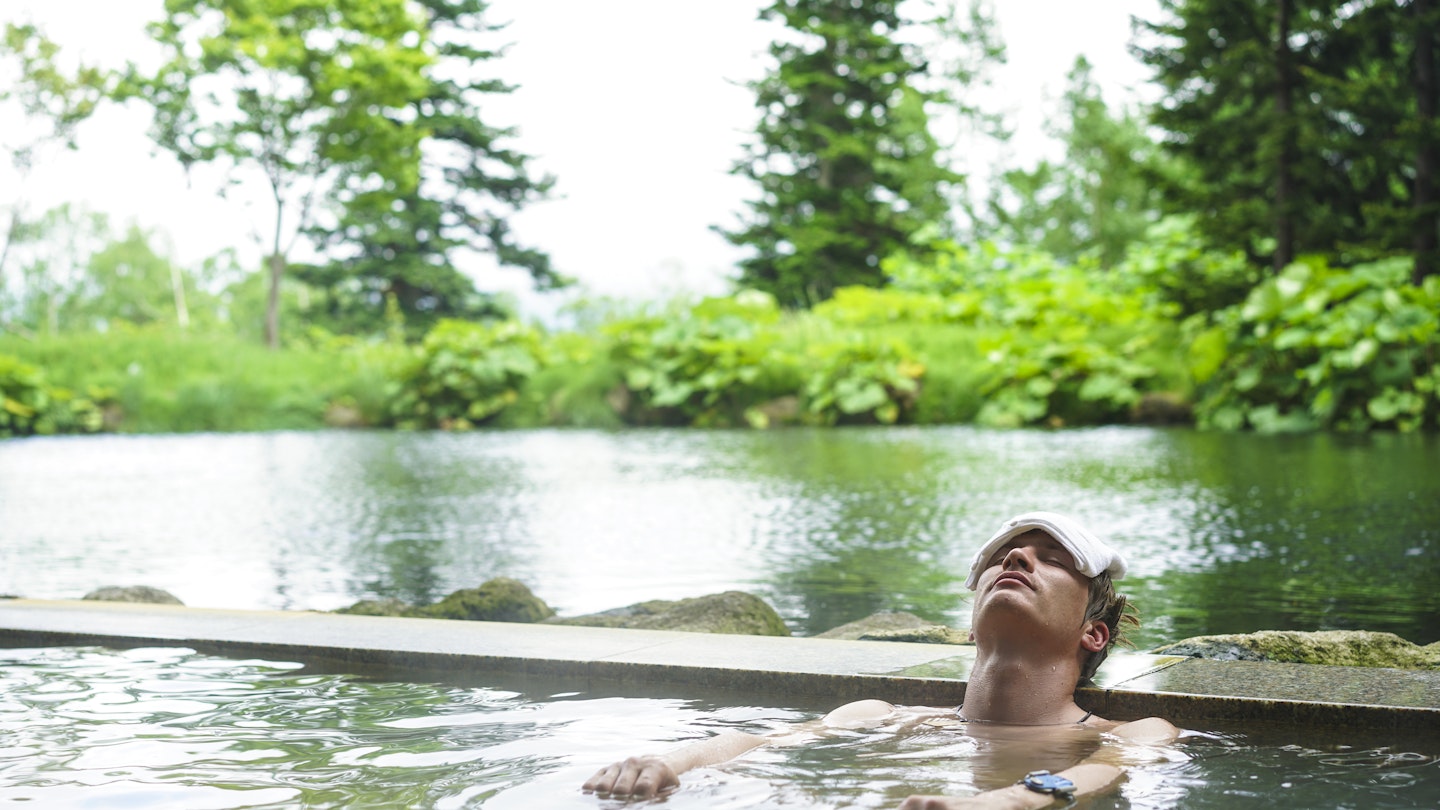Experience Japan’s Onsens: A Guide to Natural Hot Springs
The atmosphere of the room was perfectly still, with scalding steam rising from the surface of the water. I almost expected the milky grey liquid to start bubbling like a volcanic swamp, but, save for the ripples caused by its occupants, the onsen water was perfectly calm.
The first thing I noticed was the unmistakably powerful scent of sulphur that filled the air. If you’ve ever been the victim of a stick bomb prank, you’ll recognize the familiar scent of rotten eggs engulfing your nostrils. Rest assured it only lasts a short moment before your sense of smell adjusts, fading away along with any stress.
This was my first experience with Japan’s natural bubbling hot springs – onsen. Japan boasts over 3000 onsen, making them a priority for many visitors. There is much mystique surrounding these hot spring baths, as they hold significant cultural importance. Consequently, there are specific rules associated with using the baths. I’m here to give you the lowdown on how to have the best experience possible while respecting this beautiful practice.
First of all, what is an onsen?
An onsen is a natural hot spring bath that is geothermically heated underground by volcanic activity. For a body of water to be considered an onsen, it must contain at least one of the nineteen chemical elements found in natural spring water and must be at least 25°C upon emerging from the ground.
There are numerous onsens available for either public or private use throughout Japan. Luckily for me, I was able to enjoy private onsens in the popular towns of Akiu and Naruko. However, exercise caution if you plan to use a completely natural onsen outdoors, as the water can reach high temperatures. Regardless of which one you choose, the following etiquette must be strictly observed:
- You must bathe yourself before entering the onsen (facilities are available in the vast majority of locations).
- You must be nude while in the spring. Most onsen baths are gender-segregated, but mixed baths do exist. Most allow towels for modesty, but certain very traditional ones may not – check to avoid offence.
- If you wish to preserve your modesty, you can enter the onsen with a small washcloth or towel to cover yourself, but once in the water, the towel must go either to the side or on your head. I placed mine to the side after taking photos for obvious reasons!
- Due to the sacred nature of the springs, and a historical connection in Japan between tattoos and gang activity, you are unlikely to be admitted if you display obvious body ink. However, this is gradually changing and there are some options available if you need them.
- No hair allowed in the water! Therefore, make sure to have a hairband with you before stepping in.

Why are onsens considered so sacred?
While the concept of communal bathing may be unfamiliar to many foreigners, in Japan, it is a cherished aspect of traditional culture. Stories about onsen water containing a multitude of healing properties have been told throughout Japanese history, and the water is packed with minerals that many believe benefit the skin, circulation, and overall health.
My personal experience using the onsen was wonderful; the water is scorching hot initially, but after about five minutes, you acclimatize to the heat and the distinctive smell. I found myself floating to the surface due to the high levels of sulphur and natural minerals, which I was told is not unusual. A word of caution for those with low blood pressure: it’s advisable not to stay in the water for too long, as the heat can induce faintness. Bathing in a hot spring was incredibly relaxing, so visiting one shortly before bedtime was an absolute blessing for an insomniac. Now, I just need to figure out how to recreate that experience in a bathroom in southeast London!




